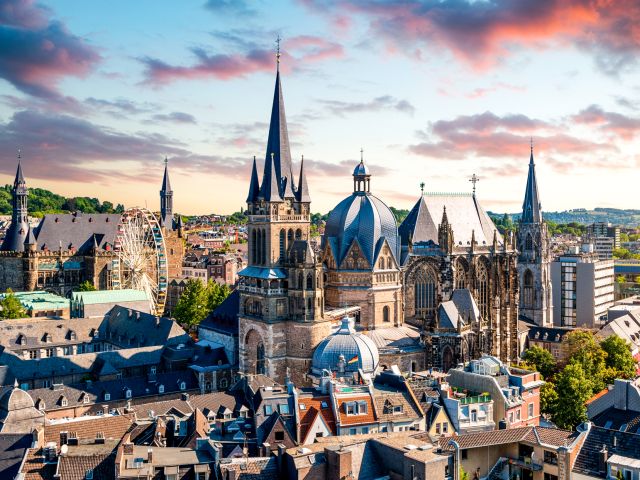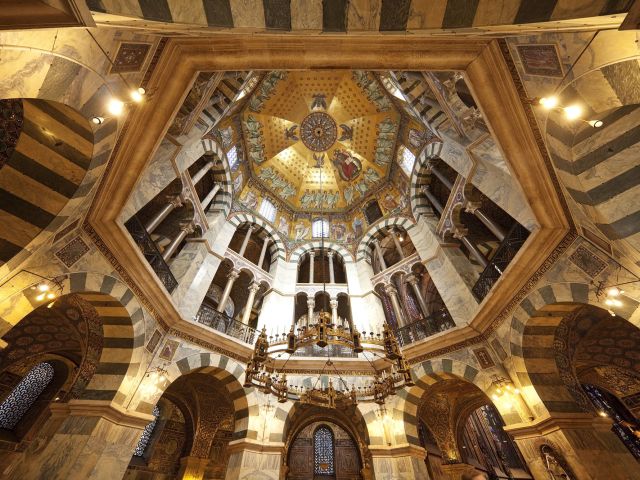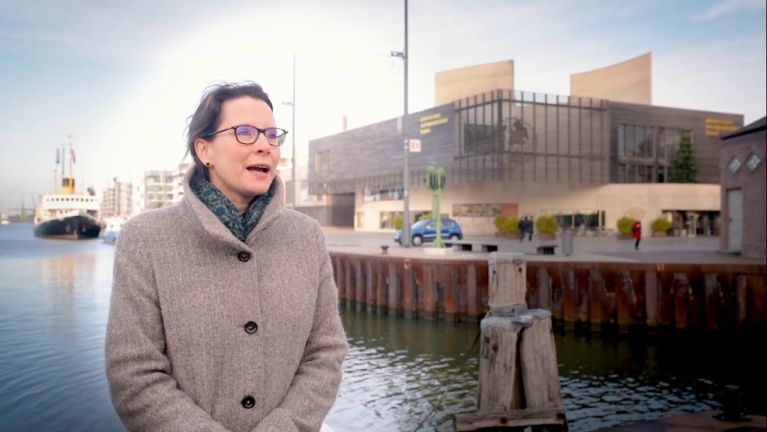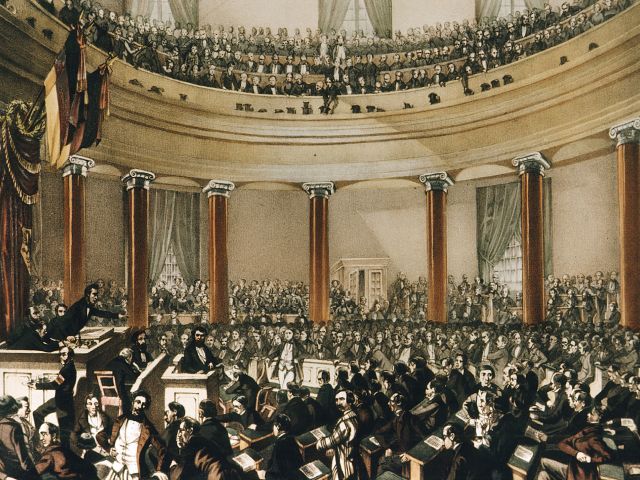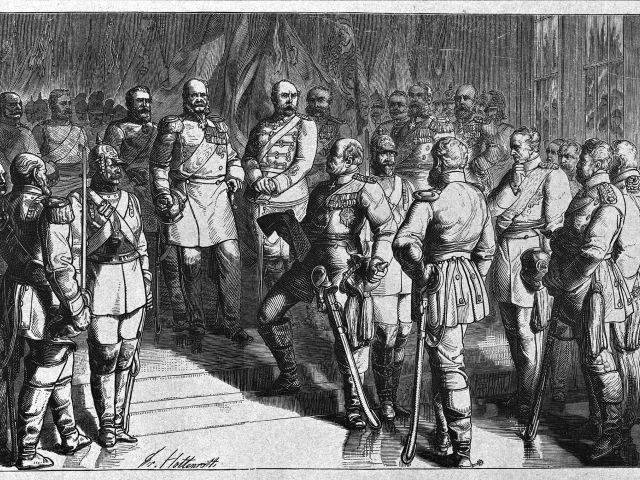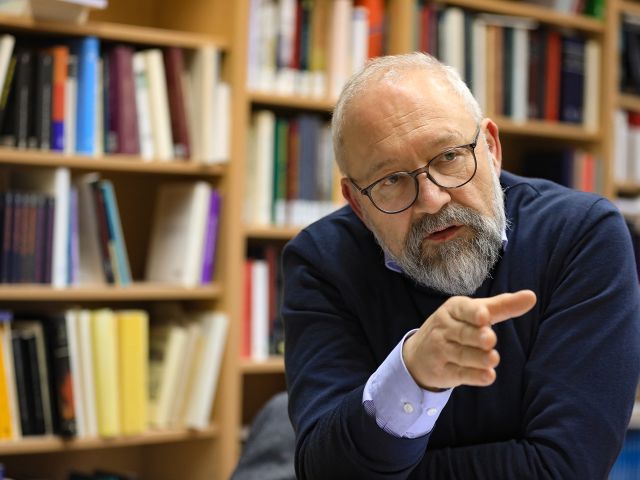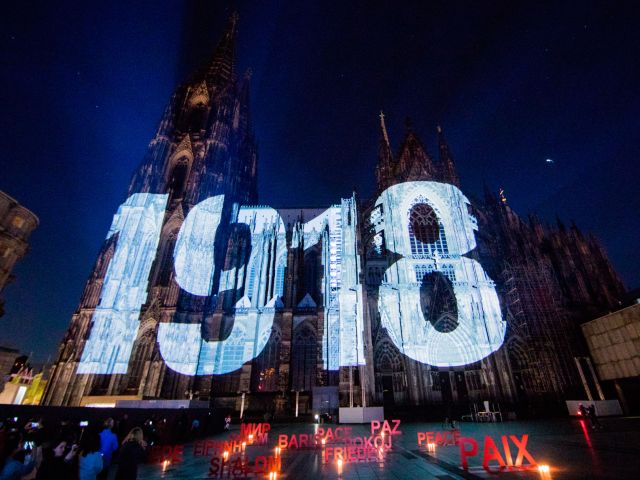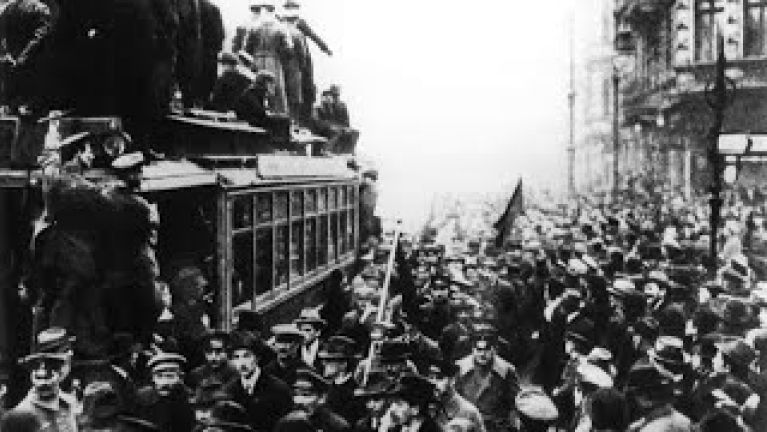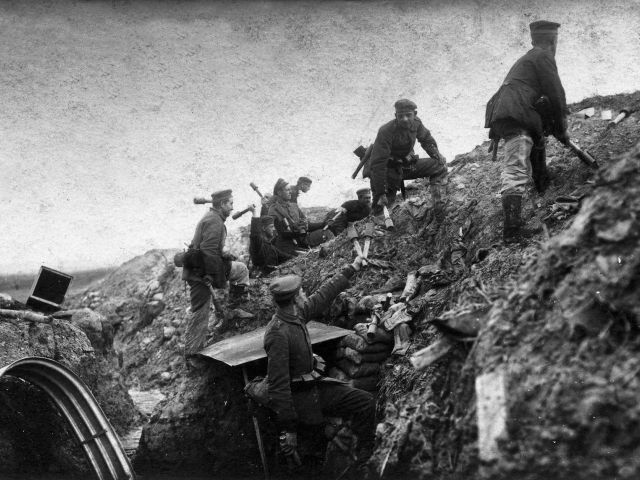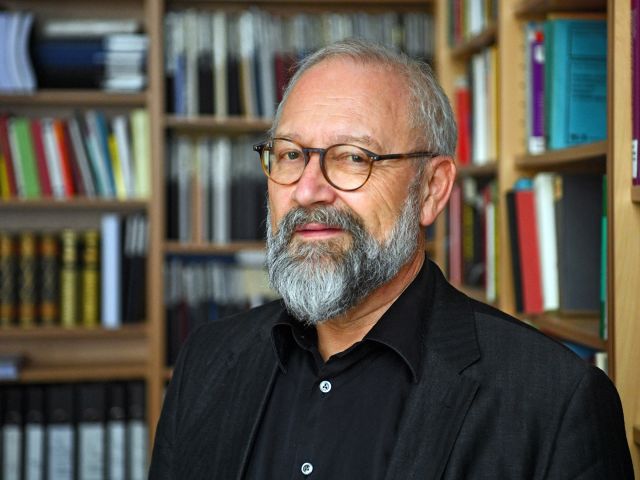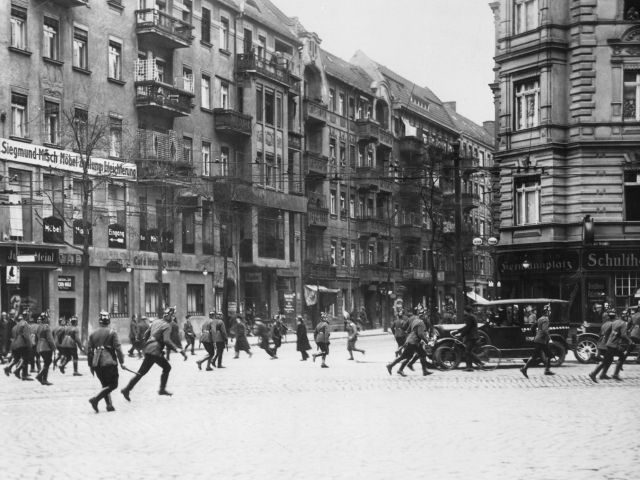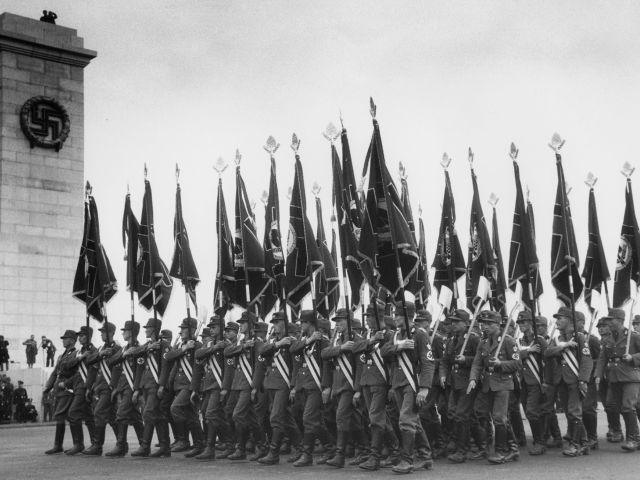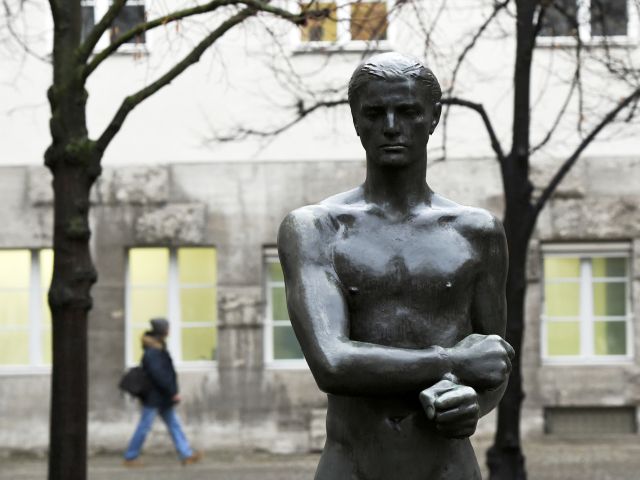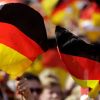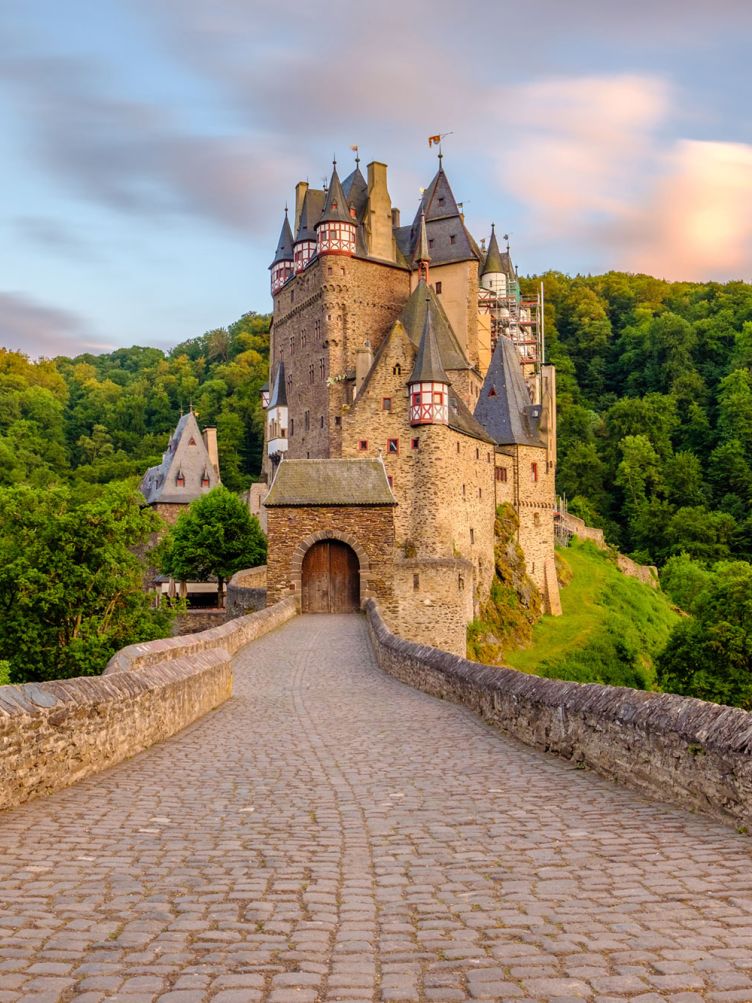
Germany history up to 1945
In some ways, German history is actually very young. There is a history of the area that corresponds roughly to the territory of Germany today, and a history of the area in which German is spoken. Some sense – though not a particularly pronounced one – of what it means to be German did evolve in the Middle Ages, yet the German Reich remained a collection of just a few large and many small principalities that were politically independent, at least theoretically – in 1650 there were around 360 of them. It was not until the nineteenth century that a widespread feeling of national belonging came about; this ultimately led to calls for a German nation state.
Here is an overview of some key historical dates leading up to the founding of the Federal Republic of Germany.
Journey through history: you shouldn’t miss out on these seven World Heritage Sites in Germany.
Eighth century
The rise of the Carolingians
This century saw the Kingdom of the Franks expanded from the territory of modern-day France. Charlemagne’s subjugation of many Germanic tribes, especially the mighty Saxons, since 768 was the high point.
Ninth century
800 Charlemagne
The ruler of the Kingdom of the Franks was crowned Emperor of the Romans by Pope Leo III in the year 800. Charlemagne, who died in Aachen in 814, was later named the “Father of Europe”. That said, Europe is considerably larger than Charlemagne’s realm. Looking back, he is considered more European than German or French.
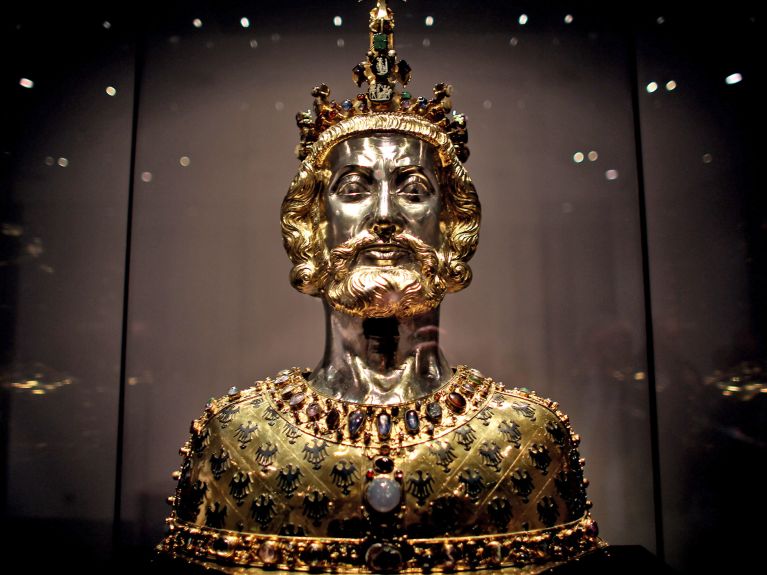
Tenth century
962 Otto I, Otto the Great
The coronation of Otto as emperor marked the start of the “Holy Roman Empire” ruled by German emperors who followed the traditions of the Ancient Roman Empire. Like that of the Carolingians, the Roman Empire had no capital, its rulers travelling constantly through the empire with their families and imperial household. They would normally reside in palaces built especially for this purpose, which served as the temporary seat of government.
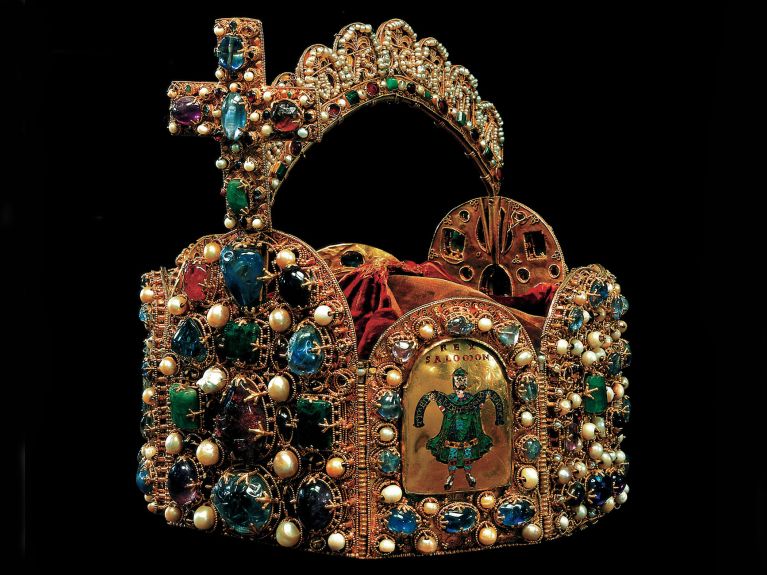
Eleventh century
1024–1125/1138–1268 Salians and Staufers
The dynasties of the Salians, who built Speyer Cathedral, and the Staufers had considerable influence on the fortunes of Europe. One of the most important Roman-German emperors of the Middle Ages was Frederick II, who lived for most of the time in Sicily. Contemporaries named this cosmopolitan and highly educated emperor “stupor mundi”, the “wonder of the world”.
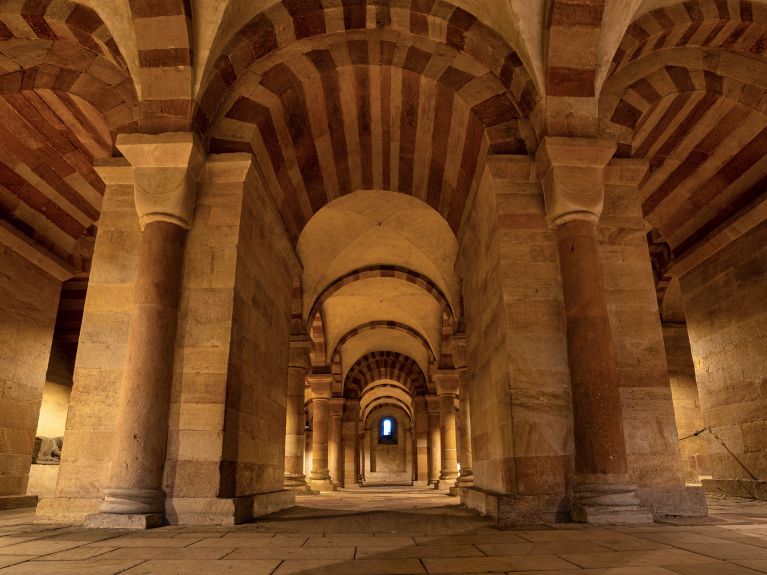
Twelfth century
1179 Hildegard of Bingen
An abbess and healer, not to mention one of the most important women of the German Middle Ages, Hildegard died in Bingen am Rhein at the age of 81. The monastery she founded was destroyed in the Thirty Years’ War and was later rebuilt.
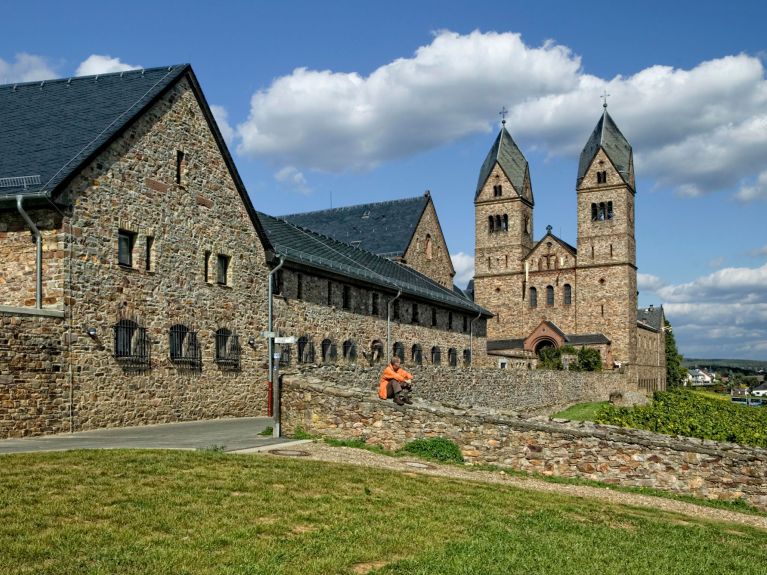
Thirteenth century
1248 Cologne Cathedral
This century was characterised by the fall of the Staufers and the loss of power of the emperors. Secular and ecclesiastical princes became increasingly powerful. In 1248, the foundation stone for one of Germany’s most famous buildings was laid: Cologne Cathedral.
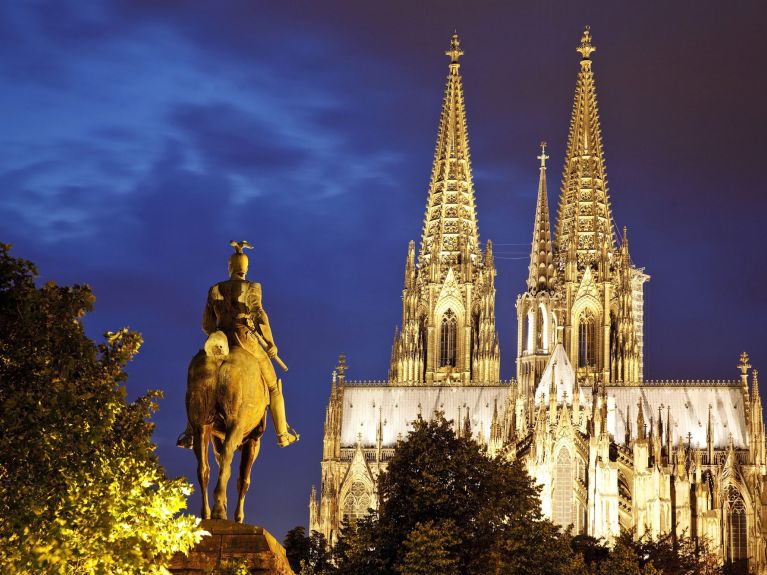
Fourteenth century
1356 Hanseatic League
The Hanse, a league of up to 72 free towns with a further 130 allied towns, was to all intents and purposes a major power in the Baltic and North Sea regions for 100 years. It was based on trade, which led to many towns – including Lübeck, its main centre, but also Hamburg, Bremen and Cologne – becoming rich.
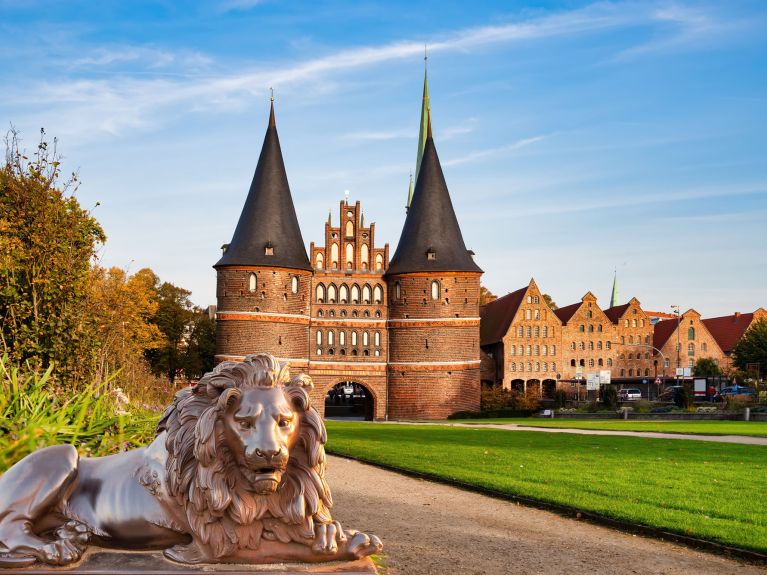
Fifteenth century
1452–1454 Letterpress printing
Johannes Gutenberg (um 1400–1468), the inventor of letter press printing with moveable type, was the first to print the Bible in Mainz in a print run of roughly 180 copies. Previously, all manuscripts had to be written by hand, which meant that they were very expensive and accessible to only few people.
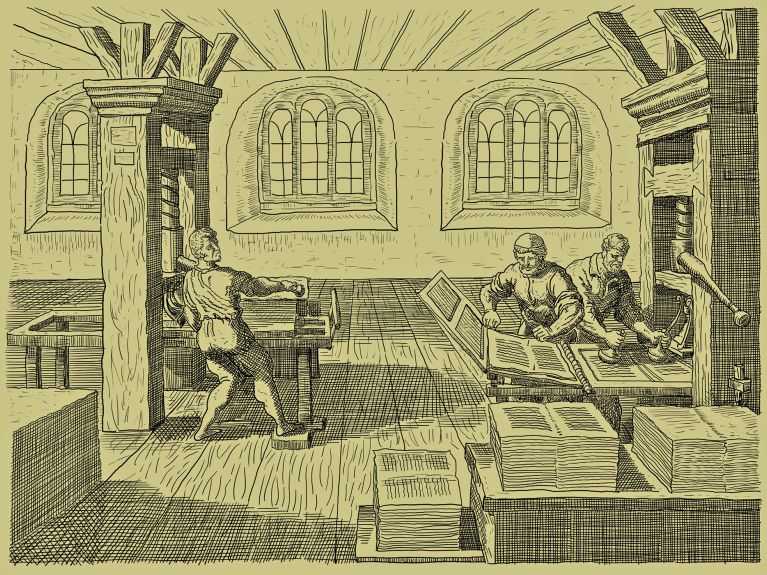
1493 Rise of the House of Habsburg
The regency of Maximilian I marked the start of the rise of the House of Habsburg. For centuries, it was one of the dominant noble dynasties in Central Europe, supplying most of the emperors and kings of the Holy Roman Empire of the German Nation (thus named since the end of the 15th century) and, from 1504–1700, the kings of Spain. The Habsburgers are named after their family home, the small Castle of Habsburg in what today is the Swiss canton of Aargau.
Sixteenth century
1517 Reformation and religious schism
The era of the Reformation began when Martin Luther (1483–1546) published his 95 theses in Wittenberg, opposing the Catholic Church’s system of indulgences. His first translation of the Bible into German made the text accessible to those who did not speak Latin.
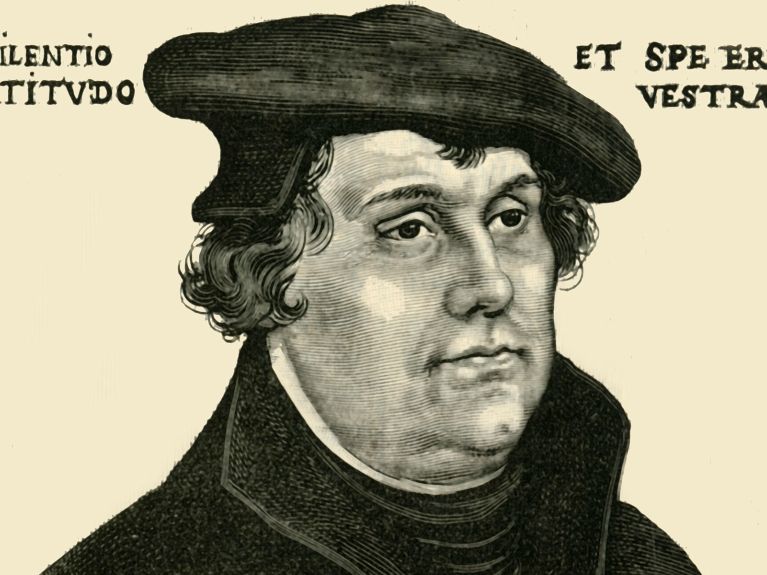
Seventeenth century
1618–1648 Thirty Years‘ War
Both a war of religion and a conflict between states, the Thirty Years‘ War ended with the Peace of Westphalia, which recognised the Catholic, Lutheran and Reformist faiths as being equal. The war, which saw alternating alliances between the emperor and the Catholic League, with the Protestant Union on the other side, destroyed large parts of Central Europe, and especially the “Holy Roman Empire”. In some parts of southern Germany up to two thirds of the population lost their lives.
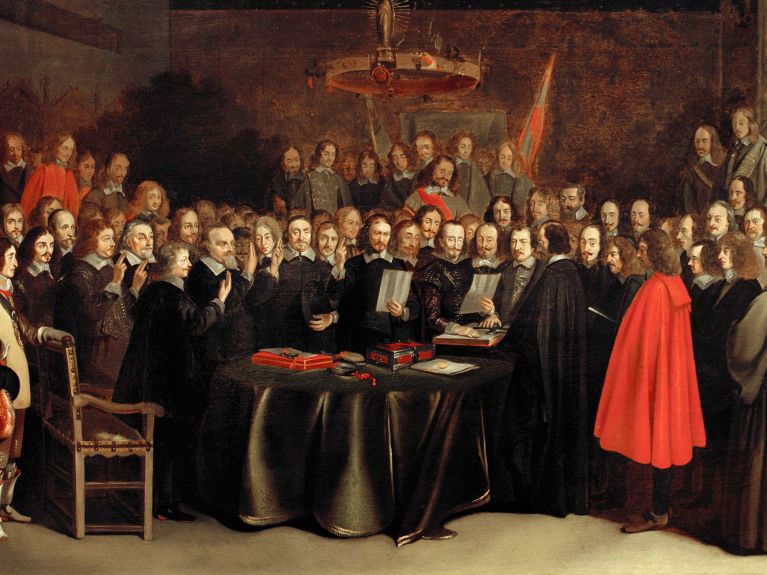
Eighteenth century
1740–1786 Frederick II, Frederick the Great
During the reign of Frederick II of Prussia, an aesthete and military commander, Prussia rose to become a major European power. His rule is considered exemplary of the age of “enlightened absolutism”. At the same time, however, many people left their homeland. Encouraged by the rulers there, many Germans emigrated to the East in the second half of the eighteenth century: to Hungary, Romania and Russia.
It was only the fall of Prussia and the grand coalition against Napoleon in 1813 that resulted in a great flood of national songs, poems and caricatures.
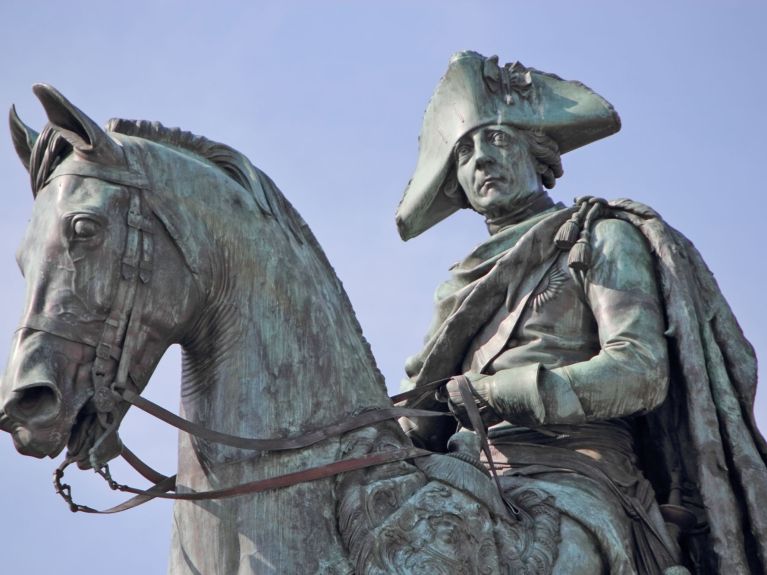
Nineteenth century
1803 Secularisation and national consciousness
The secularisation of ecclesiastical states and the dissolution of free imperial cities by the Imperial Recess heralded the end of the “Holy Roman Empire of the German Nation”. The French Revolution brought many new ideas, also to Germany – such as the Republican values, and also the idea of national resistance to the French occupation.
Erst der Niedergang Preußens und die große Koalition gegen Napoleon 1813 brachten eine breite Flut nationaler Lieder, Gedichte und Karikaturen hervor.
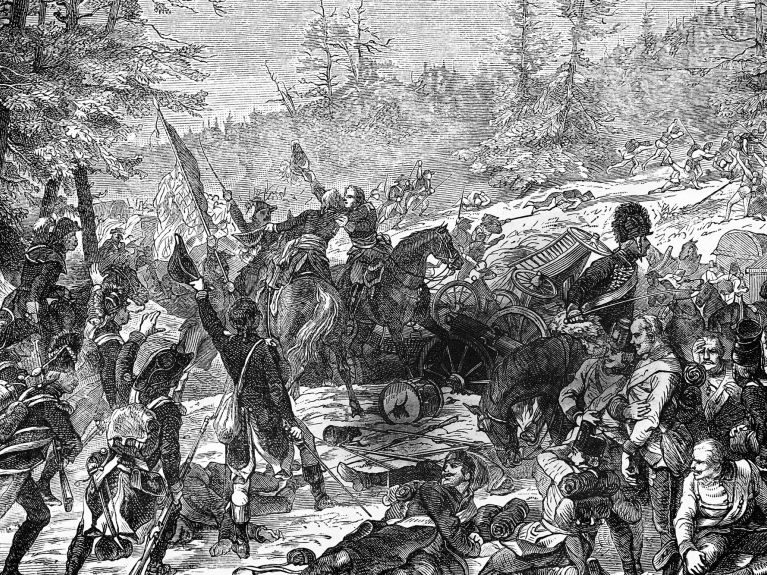
1848/49 March Revolution
The “German Revolution” began in the Grand Duchy of Baden. It quickly spilled over to the remaining states of the German Confederation and led to the first German national assembly, which met at St. Paul’s Church in Frankfurt. The crushing of the revolution, coupled with poverty and a lack of prospects, resulted in around one million Germans emigrating between 1850 and 1855, by far the majority to the USA.
Dieses YouTube-Video kann in einem neuen Tab abgespielt werden
YouTube öffnenThird party content
We use YouTube to embed content that may collect data about your activity. Please review the details and accept the service to see this content.
Open consent formFor the Germans there were always two sides to the German Question: that of territory and that of constitution, or to be more precise, the question of the relationship between unity and freedom.
1871 Proclamation of the German Empire
On 18 January, while the Franco-Prussian War was still ongoing, William I was proclaimed German Emperor in Versailles. The (second) German Empire was a constitutional monarchy. Shortly after the Empire was established, an economic upswing ensued, known as the “founders’ years”. As a result, emigration also declined sharply.
Twentieth century
From the First World War to the present: Europe in the focus of history.
1914–1918 First World War
Emperor William II isolated Germany in foreign policy terms and led it to the catastrophe of the First World War, which cost nearly 15 million lives. The Treaty of Versailles was signed in June 1919.
1918 marked the end of the First World War. Facts and figures about the seminal catastrophe of the twentieth century.
Dieses YouTube-Video kann in einem neuen Tab abgespielt werden
YouTube öffnenThird party content
We use YouTube to embed content that may collect data about your activity. Please review the details and accept the service to see this content.
Open consent formIt was not until October 1918, when there could no longer be any doubt about Germany’s military defeat, that the decisive change to the constitution occurred, making the Reich Chancellor dependent on the confidence of the Reichstag.
How the First World War continues to this day: the political scientist Herfried Münkler discusses lessons learned from the mistakes of the past.
1918–1933 Weimar Republic
On 9 November, the Social Democrat Philipp Scheidemann declared the Republic and Emperor William II abdicated. Elections to the National Assembly were held on 19 January 1919. There was considerable opposition to the new Republic from the start, both from the right and from the left. Thanks to the support of the army and a large part of the business world, the right-wing enemies of democracy became ever stronger.
Farewell to the German question: Looking back at the Weimar Republic from 1919 to 1933.
1933 National Socialism
Adolf Hitler’s NSDAP became the strongest party in the Reichstag elections on 6 November 1932, winning 33.1 percent of the vote, and on 30 January 1933 Adolf Hitler became Reich Chancellor. The “Enabling Act” marked the start of the Nazi dictatorship.
Hitler did not come to power on the back of a major election victory, but he would not have become Reich Chancellor in January 1933 had he not been the leader of the strongest party.
1939 Start of the Second World War
Hitler unleashed the Second World War when he invaded Poland on 1 September 1939. The war cost 60 million people their lives and ravaged large parts of Europe and East Asia. Six million Jews became the victims of the Nazi extermination policy.
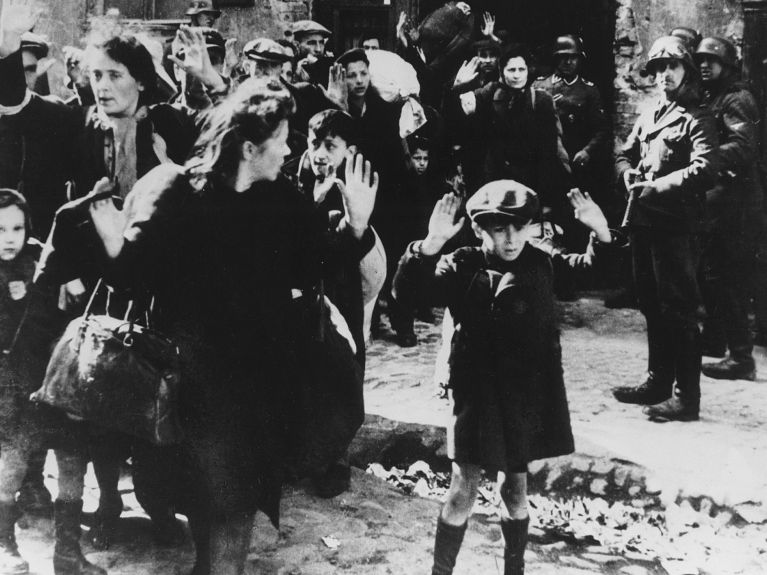
Find out here how Germany keeps the memory of the Holocaust victims alive and is committed to reconciliation:
Stauffenberg’s attempt to assisinate Hitler on 20 July: Resistance to the Nazi regime took place on many levels. We present an overview.
1945 End of the Second World War
The surrender of the German Wehrmacht on 7/9 May 1945 marked the end of the Second World War in Europe, and with it a period of inconceivable suffering. The Allies divided Germany into four occupation zones and Berlin into four sectors.
1948 Berlin blockade
The introduction of the deutschmark in the western occupation zones prompted the Soviet Union to block the access routes into West Berlin on 24 June 1948. The Allies responded by setting up an airlift to supply the population in West Berlin until September 1949.

1949 Founding of the Federal Republic of Germany
On 23 May 1949, the Basic Law of the Federal Republic of Germany was introduced. The first elections to the Bundestag – the country’s parliament – were held on 14 August. Konrad Adenauer (CDU) became chancellor. On 7 October 1949, the legal separation of East and West was completed when the constitution of the GDR entered into force. Germany’s separation only ended when the Berlin Wall fell in 1989 and Germany was reunified in 1990.
After 1945, only one part of Germany had a chance to give democracy a second go, namely West Germany. https://www.deutschland.de/en/topic/politics/the-two-german-states
Interested in Germany history after 1949? You’ll find plenty of information here:

